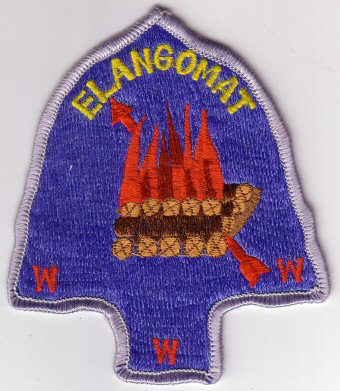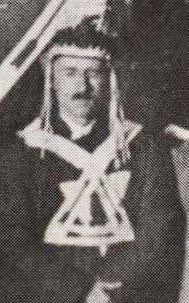2005 National Jamboree
The 2005 National Scout Jamboree was held at Fort A.P. Hill, Virginia, from July 25 to August 3 with the theme “Character Not Only Counts, It Multiplies”. 43,307 Scouts participated in the Jamboree.
In 2005, the Order of the Arrow committed itself once again to assisting with the logistics and programming of the Jamboree. It was evident that the OA was solidly engaged in providing a tremendous amount of service and programs throughout the Jamboree.
One of the most popular programs at the Jamboree was the Order of the Arrow theatrical production Twelve Cubed. A successor to the Order’s famed productions of Odyssey of the Law and Scoutopia, at previous Jamborees, Twelve Cubed was based upon recognition that the term “values” has an application in mathematical equations as well as ethical ones. “Twelve Cubed” represented an equation for life and a formula for values obtained by applying the twelve points of the Scout Law and the three parts of the Scout Oath to one’s life — a multiplication, if you will, which has an exponential effect upon a Scout’s life. Through creative, artistic, and interactive endeavors with the audience, the Twelve Cubed production helped Scouts at the Jamboree define the true meaning of character and values.
Registering its largest turnout in its nine-year history, The Outdoor Adventure Place (TOAP) had 33,000 attendees visit the exhibit area during the nine days of the Jamboree. Through the Leave No Trace (LNT) program, Scouts were able to train in the seven principles of LNT, as well as meet with various federal land management agencies, including the U.S. Forest Service, Bureau of Land Management, Corps of Engineers, National Park Service and U. S. Fish and Wildlife Service. In addition to serving as a learning environment, TOAP was a place to have fun and hang out; Scouts were constantly involved with activities such as the many climbing walls, outdoor cooking area, and pioneering tower.
The OA American Indian Village continued to expand in popularity and scope from previous Jamborees. The Village, located near the Merit Badge Midway, also offered Scouts the opportunity to earn the Indian Lore Merit Badge and explore American Indian culture through living history displays, songs, and dance. During the Jamboree, 325 full and partial Indian Lore Merit Badges were awarded. The Village also hosted a large Pow Wow one evening, and used a traveling group of dancers to promote their program area and the American Indian culture throughout the Jamboree.
The Order of the Arrow’s Service Corps provided hundreds of hours of cheerful service to the thousands of participants in all corners of the Jamboree. Arrowmen on the Service Corps team served as security for arena shows, delivered lunches, conducted flag raisings, and hosted special dignitaries at Fort A. P. Hill. In addition, the Service Corps provided service to the various Jamboree camps and in turn became the most well-known and visible group on-site. Using the theme “Service: Can You Dig It?” they demonstrated the Order’s principles throughout the Jamboree.
3, Ceremonies, National Event, OA, Scouting
 Following the presentation of the optional
Following the presentation of the optional 